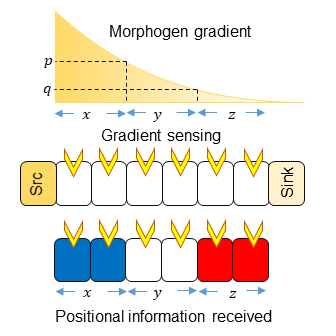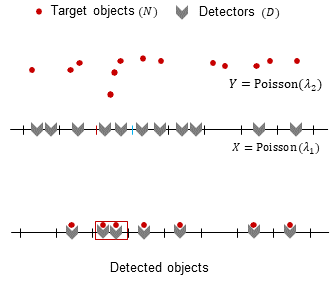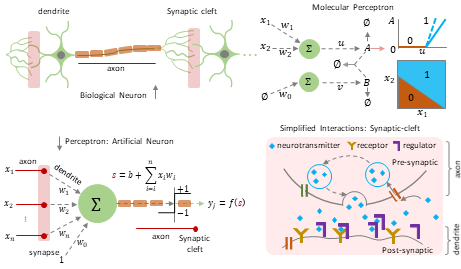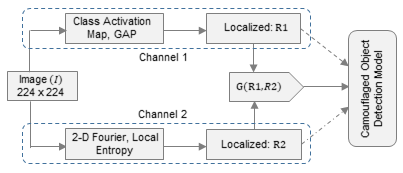Systems and Networks Study Group
Systems and synthetic biology
 |
Species development experiences numerous forms of regulations at different embryonic stages because of numerous proteins capable of altering the underlying signaling dynamics of biological processes. Also, these processes are inherently noisy and often deviate away from the stipulated strength, yet the development of species demonstrates remarkable plasticity. Our research adopts stochastic and deterministic approaches to unravel the mechanisms that assure remarkable reproducibility of species development despite the presence of alternative sources of perturbations and noises of different forms. We adopt alternative context-based quantitative approaches.
|
Publications
Md. Shahriar Karim, Aasakiran Madamanchi, James A. Dutko, Mary C. Mullins, David M. Umulis, Heterodimer-heterotetramer formation mediates enhanced sensor activity in a biophysical model for BMP signaling, PLOS Computational Biology, September 30, 2021. doi 10.1371/journal.pcbi.1009422
Md. Shahriar Karim, Gregery T. Buzzard, David M. Umulis, Efficient calculation of steady state probability distribution for stochastic biochemical reaction network, BMC Genomics volume 13, Article number: S10 (2012), October 26, 2012.
Md. Shahriar Karim, Gregery T. Buzzard, David M. Umulis, Secreted, receptor-associated BMP regulators reduce stochastic noise intrinsic to many extracellular morphogen distributions., Journal of the Royal Soc. Interface, 2012 May 7;9(70):1073-83. doi: 10.1098/rsif.2011.0547.
Estimation and detection theory
 |
The detection and estimation of randomly-scattered objects distributed in time or space are frequent in a broad range of applications in science and engineering, including communications theory, signal processing, ecology, and biological modeling. Many systems consider random point processes distributed randomly in the continuum (time or space) to describe the underlying phenomenon. Often it is necessary to estimate the rate of random events, where random observation by an observer attempts to detect the target of interest. In many systems, both target objects and the detection attempts to detect those are randomly distributed in a continuum. Intensity estimation of the randomly arriving targets in these systems is crucial for many critical applications. |
Publications
Md. Shahriar Karim, Mark R. Bell, Estimation of Poisson Event Rate Using Poisson Distributed Random Observers for Sensing Applications [ working manuscript , Area: Statistical Signal Processing ]
Molecular Computation:
 |
Cells are excellent computational devices tuned and calibrated against different forms of perturbations by billions of years of evolutionary steps. For a robust and highly reproducible growth and maintenance of underlying biophysical processes, many signaling pathways continuously transmit and process information to guide the cellular processes and gene expression underneath. We capitalize on these signaling networks, their connectivity, and other forms of regulation to perform computation capable of classifying objects, applicable in intelligent drug design, DNA computing, and aqueous deployment for pollutant detections. |
Publications
Muhtasim Ishmum Khan, Moshiur Rahman, Md. Shahriar Karim, Development of A Molecular Exchange Mechanism-based Biomolecular Neural Network, Published at the GEM workshop, ICLR 2024.
Moshiur Rahman, Muhtasim Ishmum Khan, Md. Shahriar Karim, Design of a molecular exchange-based robust perceptron for biomolecular neural network, Publisehd at the The Second Tiny Papers Track at ICLR 2024
Neural Network Applications: NLP
 |
Natural Language Processing (NLP) tasks in non-dominant and low-resource languages have not experienced significant progress. Although pre-trained BERT models are available, GPU-dependency, large memory requirement, and data scarcity often limit their applicability. So, countries lacking substantial socio-economic capacity and technological infrastructures are lagging. The current trend of NLP research evolves mainly around a few dominant languages, leaving NLP research for many low-resource languages unattended or less explored when there is a surge of textual toxicity in social media. Interestingly, many textual classification tasks do not require a rigorous use of linguistic semantics. So, models structured well against the semantics, for instance, the BERT models, may not always be the most optimal choice in NLP tasks less dependent on language semantics. |
Publications
Syed Mustavi Maheen, Moshiur Rahman Faisal, Md. Rafakat Rahman and Md. Shahriar Karim, Alternative non-BERT model choices for the textual classification in low-resource languages and environments, The third edition of Deep Learning for Low-Resource NLP, 2022, collocated with NAACL 2022.
Image Analysis
 |
Advancements in deep learning models have propelled the emergence of computer vision, requiring computers or digital devices to assess images and videos and perform object detections automatically. These applications require an exhaustive exploration of an image at pixel levels to extract the necessary information to facilitate object recognition in applications from self-driving cars to security, disease detection, to medical imaging. |
Publications
Md. Rakibur Rahman, Md. Mafri Chowdhury, Md. Shohanur Rahaman Sarkar, Md. Shahriar Karim, A Multichannel Localization Method For Camouflaged Object Detection. [ Accepted in ICIP 2023 ]
Efficient Computing
To be updated soon
Members
Graduate Students
TBA
Alumni
Syed Mustavee Mahin, Graduate Research Assistant (MS), Emporia State University, USA
Md. Moshiur Rahman, AI Innovation Specialist, Robi Axiata Limited, Bangladesh